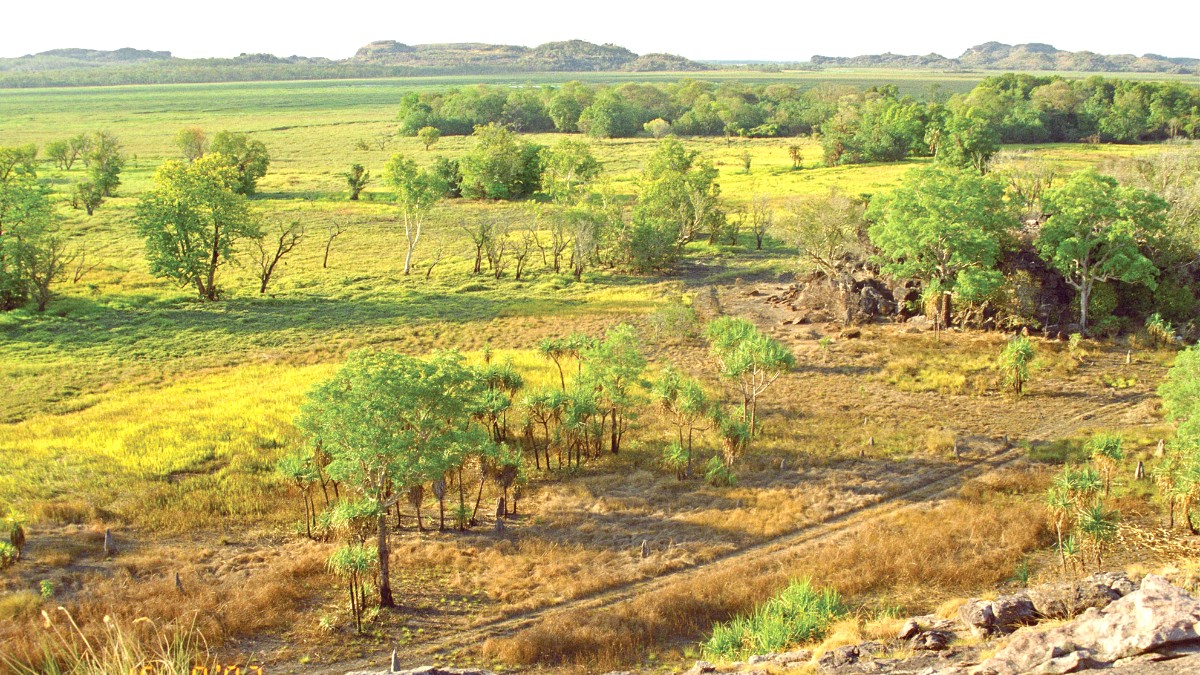
Northern Territory, Australia
Kakadu’s iconic sites display its unique blend of natural beauty and cultural depth. These places are often at the top of a visitor’s list.
Less crowded times: Early morning (before 9 am) or late afternoon (after 4 pm) generally have fewer crowds at popular sites. The Wet Season sees significantly fewer visitors, offering a more solitary experience. Consult park rangers for secret viewpoints.
Rock Art Sites (Ubirr, Burrungkuy/Nourlangie) are living archaeological sites, with continuous human occupation and artistic creation spanning tens of thousands of years. They present invaluable insights into Aboriginal history, spirituality, and daily life.
No historical districts in the traditional sense within Kakadu. The landscape itself acts as the historical canvas, specifically the Arnhem Land escarpment and its ancient rock shelters.
Many sites throughout Kakadu, especially the rock art galleries, hold deep sacred meaning to the Traditional Owners. Visitors follow all cultural protocols and restrictions, including "no photography" signs.
No specific memorial sites or monuments in the traditional sense exist within the park. The land and its art serve as memorials to a continuous, living culture.
Ranger Uranium Mine (near Jabiru) is a closed industrial site. Its presence and eventual rehabilitation form part of the park's contemporary history.
Kakadu's natural features are impressive as its cultural ones, showing diverse ecosystems and breathtaking scenery.
Kakadu National Park itself is the main natural attraction, covering nearly 20,000 square kilometers of diverse landscapes.
Ubirr Lookout presents panoramic views over the Nadab floodplain. Burrungkuy (Nourlangie) Lookout offers views of the Arnhem Land escarpment. Gunlom Falls has a natural infinity pool with stunning views. Scenic flights give unparalleled aerial views of the vast floodplains and waterfalls.
Yellow Water Billabong is exceptional for spotting saltwater crocodiles and various bird species. Mamukala Wetlands features an excellent bird hide. The South Alligator River and East Alligator River are good for crocodile spotting.
The Arnhem Land Escarpment, with dramatic sandstone cliffs and gorges, forms a striking boundary. Billabongs and Floodplains are vast, seasonally flooded plains that support rich ecosystems.
Prominent waterways include the South Alligator River, East Alligator River, and Yellow Water Billabong. Swimming is strictly limited to designated safe areas due to crocodiles. Safe swimming is permitted in designated plunge pools at sites like Maguk, Gunlom, and some sections of Jim Jim and Twin Falls during the Dry Season.
Kakadu's landscapes transform with the seasons, offering different experiences throughout the year, from lush wet season greenery to dry season open woodlands.
A less visited, beautiful waterfall and swimming hole. It is accessible via a 4WD track and a short walk. This spot often stays quieter than Maguk or Gunlom.
Presents expansive views over the southern floodplains and woodlands. It serves especially well at sunrise or sunset. This site is easily accessible off the Kakadu Highway.
While known for birdwatching, it is often overlooked by those rushing to the waterfalls. Its bird hide presents quiet, immersive wildlife viewing opportunities.
Beyond the well-known landmarks, Kakadu offers quieter, equally rewarding spots that reveal a different perspective of the park.
Kakadu's natural features are impressive as its cultural ones, showing diverse ecosystems and breathtaking scenery.
From ancient rock formations to thriving wetlands, the park presents a natural spectacle.
Kakadu's landscape is shaped by ancient geological forces, creating striking and unique features.
Kakadu is a haven for diverse wildlife, with prime viewing locations.
While waterways teem with life, designated areas offer safe water recreation.
Kakadu National Park itself forms the principal natural attraction.
Beyond the well-known landmarks, Kakadu offers quieter, equally rewarding spots that reveal a different perspective of the park.
A less visited, beautiful waterfall and swimming hole.
This spot offers tranquility and a refreshing dip away from larger crowds.
Presents expansive views over the southern floodplains and woodlands.
A perfect spot for sweeping landscape photography and quiet contemplation.
An excellent bird hide offers opportunities for birdwatching.
A serene location for nature photography and peaceful wildlife observation.
Many smaller, unnamed billabongs or less accessible rock art sites exist, often known by local guides.
Capture dramatic storm clouds and lightning during the Wet Season or reflections on Yellow Water Billabong at dawn.
The park's focus centers on established Kakadu attractions, with more emphasis on cultural understanding and conservation.